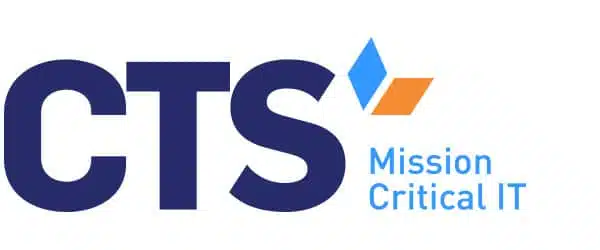Mid-market banks—especially community and private institutions—face a constant balancing act. Delivering seamless digital banking experiences while meeting stringent regulatory demands takes more than basic IT support. It demands a partner that understands the financial sector’s nuances and is equipped to deliver managed IT services that strengthen both operations and compliance.
This article is designed to help decision-makers in banking operations and technology leadership roles evaluate the real return on investment (ROI) of managed IT services. It focuses on the needs of institutions operating in high-stakes environments, where every decision carries financial, reputational, and regulatory implications.
What Banks are Up Against: Operational Strain Meets Tech Debt
Community and private banks often operate with lean IT teams stretched across cybersecurity, compliance, and digital transformation projects. These teams are under pressure to deliver on evolving customer expectations while managing aging systems and rising threat vectors.
Here’s what that challenge looks like up close:
Legacy Infrastructure Slows Progress
Many banks rely on systems that weren’t designed to support digital banking demands. Upgrades are expensive, disruptive, and often deprioritized, yet delay increases risk and operational drag. These systems hinder the adoption of secure, agile service delivery models.
Compliance is a Moving Target
Financial institutions must comply with a patchwork of regulations: GLBA, SOX, PCI-DSS, and FFIEC guidelines. Internal audits, examiner reviews, and cybersecurity frameworks require meticulous IT coordination. The cost of falling short—whether through fines or reputational damage—is steep.
Cybersecurity Threats are Escalating
Banks and credit unions are frequent targets for ransomware and phishing attacks. IT services for banks must include proactive risk management and breach response plans. A single data breach can disrupt operations, compromise customer trust, and trigger regulatory scrutiny.
Customer Demands are Rising
Clients expect responsive, always-on digital experiences backed by secure platforms. IT teams must juggle innovation with stability, maintaining uptime while enabling new features. Without reliable support, service delays and security concerns degrade customer satisfaction.
What Managed IT Services Look Like in a Banking Environment
For community and private banks, managed IT services go far beyond basic tech support. These services are designed to shoulder the heavy operational and compliance burdens banks face, using deep industry expertise and purpose-built systems.
Specific Managed IT Services for Banks
A managed service provider with financial sector experience offers solutions specifically aligned with banking needs. These typically include:
- 24/7 Network Monitoring and Support: Keeps critical systems running without interruption.
- Cybersecurity and Threat Detection: Defends against data breaches and ransomware with layered protection.
- Compliance Management: Supports audits and documentation to meet FFIEC, GLBA, and other regulatory standards.
- Data Backup and Disaster Recovery: Minimizes downtime and data loss during incidents or cyberattacks.
- Cloud Optimization: Modernizes infrastructure to improve scalability and performance while maintaining data security.
Each component is part of a unified, proactive strategy that supports digital transformation while keeping risks in check.
Why Industry-Specific Expertise Matters
Banks and financial institutions face unique challenges. Generic IT providers may not understand the impact of a failed patch update or the importance of audit trails during a compliance review. A managed IT provider fluent in financial regulations helps ensure:
- Every action aligns with risk management protocols.
- Systems remain audit-ready year-round.
- IT strategies support both growth and governance goals.
Learn more: Why Aligning Business and IT Strategies is So Important
Translating Managed IT Into Tangible ROI
A managed IT partnership is an investment that pays dividends across compliance, operations, and customer experience. Here’s how financial institutions can evaluate the ROI:
Reduce IT Spend Without Compromising Quality
- Predictable, flat-rate pricing replaces fluctuating break/fix costs.
- Consolidated service packages eliminate the need for multiple vendors.
- Scaling is more efficient—banks can expand services in step with business growth.
Prevent Downtime and Accelerate Recovery
- Proactive monitoring prevents outages before they escalate.
- Disaster recovery plans ensure minimal interruption when incidents occur.
- Business continuity remains intact—no lost time, no lost trust.
Strengthen Cybersecurity Posture
- Security breaches and data breaches carry high remediation costs.
- Managed security services deploy enterprise-grade protections and real-time threat response.
- Regular assessments and compliance reports reduce regulatory exposure.
Improve Customer Experiences
- Digital banking services remain available, fast, and secure.
- IT issues get resolved before they impact users.
- Smooth, secure experiences build long-term client loyalty.
Learn more: The Value of Managed IT Services for Business Continuity
Making the Business Case: What to Measure (and Why)
For banking CTOs and operations leads, building a solid business case means connecting IT investments to measurable outcomes. Managed IT services for financial institutions provide both hard and soft returns, each contributing to resilience, agility, and profitability.
Key Performance Indicators to Track
Quantifying ROI starts with identifying the metrics that matter most:
- Reduction in IT Incidents: Track drop in system downtime, help desk tickets, and incident response times.
- Cost Savings: Compare managed service spend with prior in-house IT expenses, including staffing, hardware, and remediation.
- Audit Readiness: Evaluate improvements in audit pass rates and time spent preparing for regulatory reviews.
- Customer Impact: Monitor customer satisfaction (CSAT) and net promoter scores (NPS) following IT upgrades or digital rollouts.
Strategic Value Beyond Numbers
While tangible metrics are critical, intangible benefits often tell the bigger story:
- Faster Time to Market: IT scalability supports rapid deployment of digital banking products.
- Reputation Protection: Proactive risk management minimizes the chance of news-making data breaches.
- Team Productivity: Internal staff can focus on strategic initiatives rather than routine tech issues.
What to Look For in a Managed Service Provider
Not all managed IT providers understand the stakes of financial sector operations. The wrong choice can expose banks to risk; the right one becomes a strategic asset.
What Financial Institutions Should Demand
When evaluating providers, ensure they bring more than just technical support:
- Proven Industry Experience: Deep familiarity with banking compliance and cybersecurity requirements.
- Transparent Service Agreements: SLAs that clearly define response times, responsibilities, and escalation paths.
- Disaster Recovery Expertise: Solid recovery time objectives (RTOs) and recovery point objectives (RPOs) tailored to your business continuity needs.
- Scalable Solutions: Services that grow as your institution expands, with minimal disruption.
- Strategic Partnership Approach: Ongoing consultation, not just reactive support.
Questions to Ask Potential Partners
- How do you tailor managed IT services for banks and credit unions?
- What compliance frameworks do your services align with?
- Can you provide references from other financial institutions?
Next Steps: Get the Managed IT Services You Deserve
For mid-market banks struggling with digital demands, compliance hurdles, or cybersecurity threats, the value of managed IT is clear. Filling technical gaps empowers leadership to pursue growth, knowing operations are secure, compliant, and scalable.
If you’re ready to move beyond reactive support, it’s time to evaluate managed service providers with financial sector expertise. At CTS, we help banks and credit unions secure their data, meet compliance, and deliver exceptional digital experiences, safely and reliably.
Reach out to us for a no-strings-attached consultation, and we can answer any further questions you have—without going too hard on the sales pitch.



